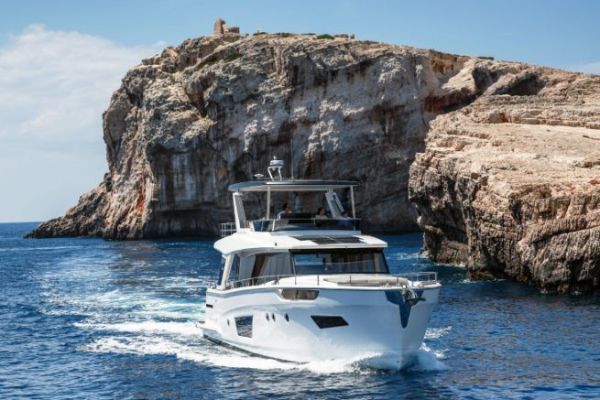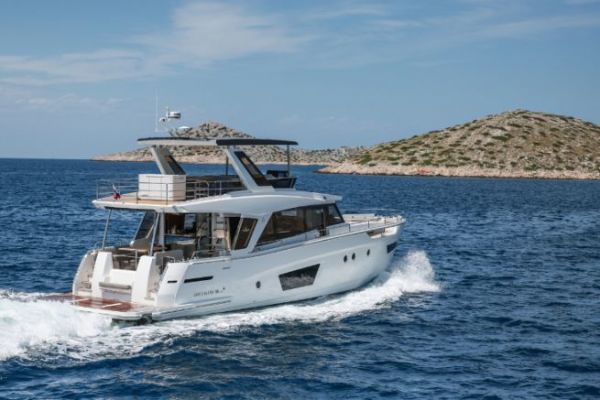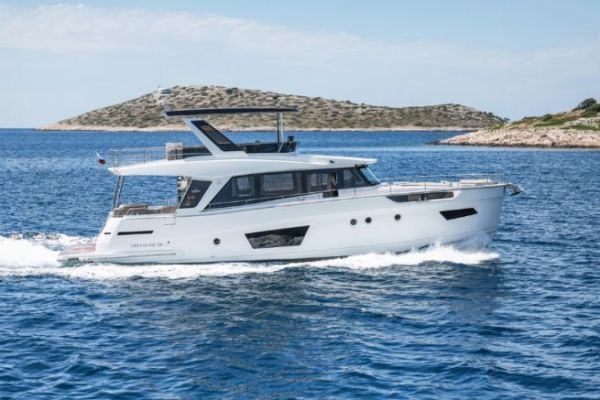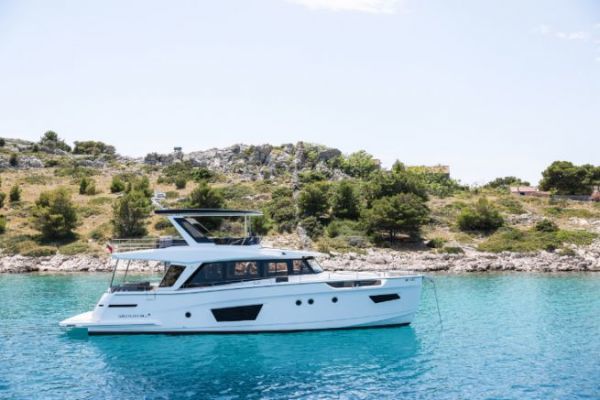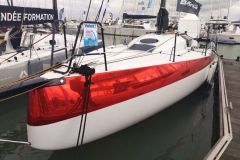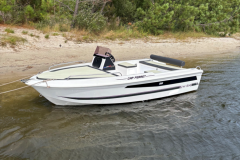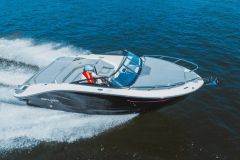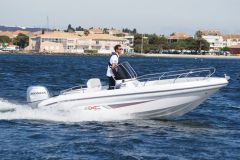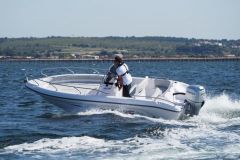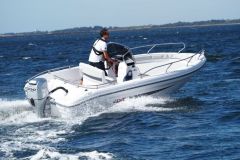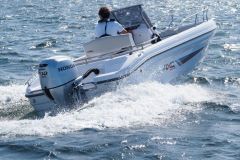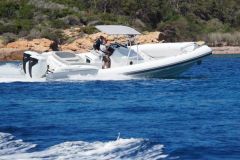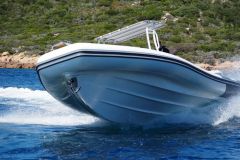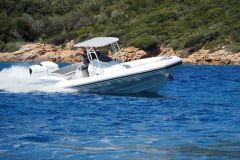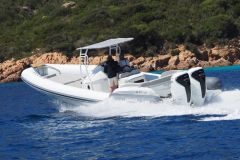At the crossroads between a trawler and a more traditional cabin cruiser, the Greenline 58 Fly features a semi-displacement hull. This boat is primarily designed for cruising with family or friends, with no sporting ambitions.
What's more, the 58 Fly weighs in at a hefty 30 tonnes, proof that it wasn't built on the cheap. To power the unit, the shipyard offers a range of traditional engines, from 2 x 730 hp MAN to 2 x 1000 hp Volvo Penta, MAN or Caterpillar. Greenline also offers another alternative with the HDrive technology in other words, a diesel-electric hybrid version, and it's precisely this version that we've had our hands on, because, let's be clear, although the boat is available with conventional solutions, the brand has built its image on environmental protection. What's more, this HDrive solution is much more technologically interesting.
An innovative hybrid system
This HDrive system is made up of two 715 hp Cummins diesel engines with three 200 Ah LifePo (lithium-polymer) batteries, and two 50 kW electric motors with 55 kWh lithium batteries. In any case, all systems are connected and the 58 Fly works as a whole, with the computer choosing the best option each time.

For cruising, you can count on the Cummins QSM engines to provide a fast cruising speed of around 16 to 17 knots. For long-distance cruising, 9 knots at 1,200 rpm will give you a range of around 600 nautical miles. Better still, if you want to make a long-distance crossing, the range at 1,000 rpm and around 7 knots can reach more than 900 miles, which is quite impressive. For sailors in a hurry, the boat can still reach 23 or 24 knots, making it a very versatile unit.
For information, the classic versions are advertised for speeds of 27 to 29 knots, but with a much shorter range. What's more, the difference in speed is minimal, so it's a good idea to play the technology card when making your choice.
The other interesting aspect of this boat is, of course, its electric motor. At this point, it's time to dispel a few preconceptions. No, the Greenline 58 Fly is not a boat designed for sailing with electric propulsion alone. We tried it out, but it was inconclusive, even though the manufacturer claims a range of 20 miles in electric mode.
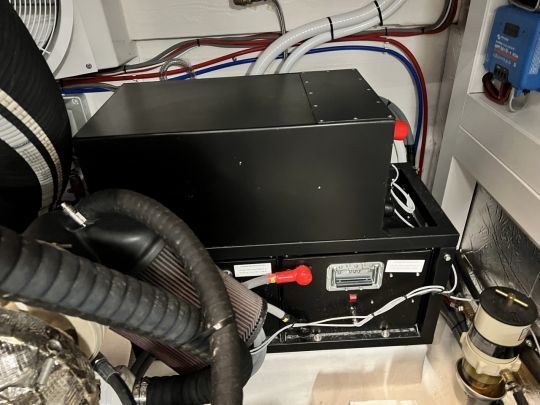
In fact, electric motors will only be used in marinas, anchorages and quiet areas. What's more, the maximum speed achieved in electric mode is just 6 knots, which won't be enough in areas with currents. Another important point is that electric motors are equipped with a safety system that reduces their operation if the temperature exceeds 92°.
Record anchorage range
In fact, the main advantage of this system is to offer an alternative, particularly in quiet areas, canals, anchorages... But above all, it provides a complete solution for enjoying all modern comforts on board, without the need for generators. The shipyard claims electric autonomy of up to 48 hours at anchor, with no need to recharge the batteries, and with normal use of all on-board appliances, including air conditioning. Unfortunately, we didn't have the chance to spend 48 hours at anchor, but it looks promising.

The boat uses several systems to recharge the batteries. During cruising, as soon as 900 rpm are reached, the generators installed at the engine shaft outputs start to charge the batteries, automatically and without any intervention. The system can also use solar energy, with panels providing a total output of 1.34 kWh, which again is quite substantial. Energy management is then handled by a CPU with a well-proven software package, now in its 22nd version.
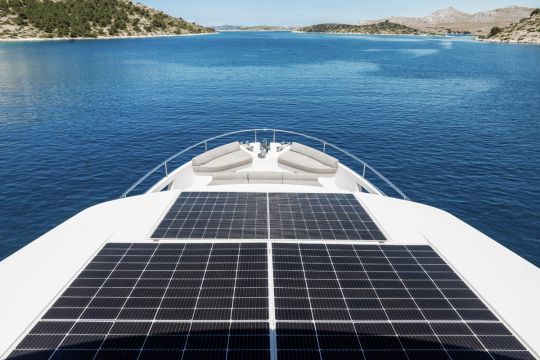
In addition to the boat's built-in screens, you can also use the Greenline app to control and manage the boat's systems from your smartphone, even remotely, and also monitor the vessel's position, useful in the event of theft or if the boat is rented out.

 /
/ 

